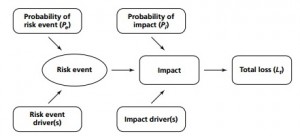Go Small or Go Home?
Professor cook provided several Project Management (PM) articles and I’d like to get your thoughts about, “The Value of Project Management,” by the Project Management Institute, 2010. The title peaked my interest and a few questions crossed my mind as I read the article.
• Is Project Management valued? What’s the big deal? Is it critical for success?
• How does Project Management affect or get affected by how a company goes to market? Or is it affected at all?
In the article, it states McKinsey & Co. surveyed senior executives and found over half of them considered “a strong Project Management discipline is a top-three priority for the company as they look to the future.” (p1) Wow. This impressed me. PM made the top three important corporate disciplines! A couple of ideas came to my mind:
1. That PM would rank so high in importance!
2. That the value a firm places on PM is linked to their future.
How about you? Are you surprised PM was ranked among the top three priority disciplines? Does your company value PM this much?
The article continues and recognizes that PM provides a way for a company to control costs, allocate resources, save time and improve project results. These benefits are especially important during a recession when streamlining operations, and minimizing costs is paramount for survival. Another finding from the Economist Intelligence Unit survey found another eye-opening statistic about PM: that 90% of global executives consider PM as “either critical or somewhat important” for their projects’ success and for the company to stay competitive. That’s 90%! Again, another impressive statistic. Between the McKinsey & Co. survey and the Economist’s survey, it seems likely that PM is very highly valued and important to an organization.
How does PM affect a company’s Go-to-Market strategies or get affected by them? To me, this relates to three things: buy-in, speed (delivery dates, deadlines), and scope.
PMs need buy-in to get the job done especially with cross-functional teams, shared resources, tight timeframes, or restricted budgets. The more top management supports the project, the more buy-in across the organization is expected. The PM can deliver results and meet Go-to-Market objectives more easily with buy-in. Speed-to-market also affects the PMs role. For example, the article tells us about Intel, an IT company in Santa Clara, CA where speed-to-market is critical. To address the need for speed, Intel will intentionally reduce scope to gain speed. This gives them a faster turnaround, a competitive advantage, provides them with more flexibility, and most of all, smaller scope provides them with a learning mechanism for quick customer feedback to make product modifications to get it right or as customer needs change. Intentionally reducing scope also, “…encourages project teams to hone in on key deliverables that can be achieved in a shorter amount of time…” p4. By choosing to “go small”, Intel goes fast, learns fast, and adapts fast. Customers get incremental value with every product revision.
Isn’t this a clever approach to PM? Would “going small” work well in your industry? Or is this approach impossible because your projects require long project life cycles?





